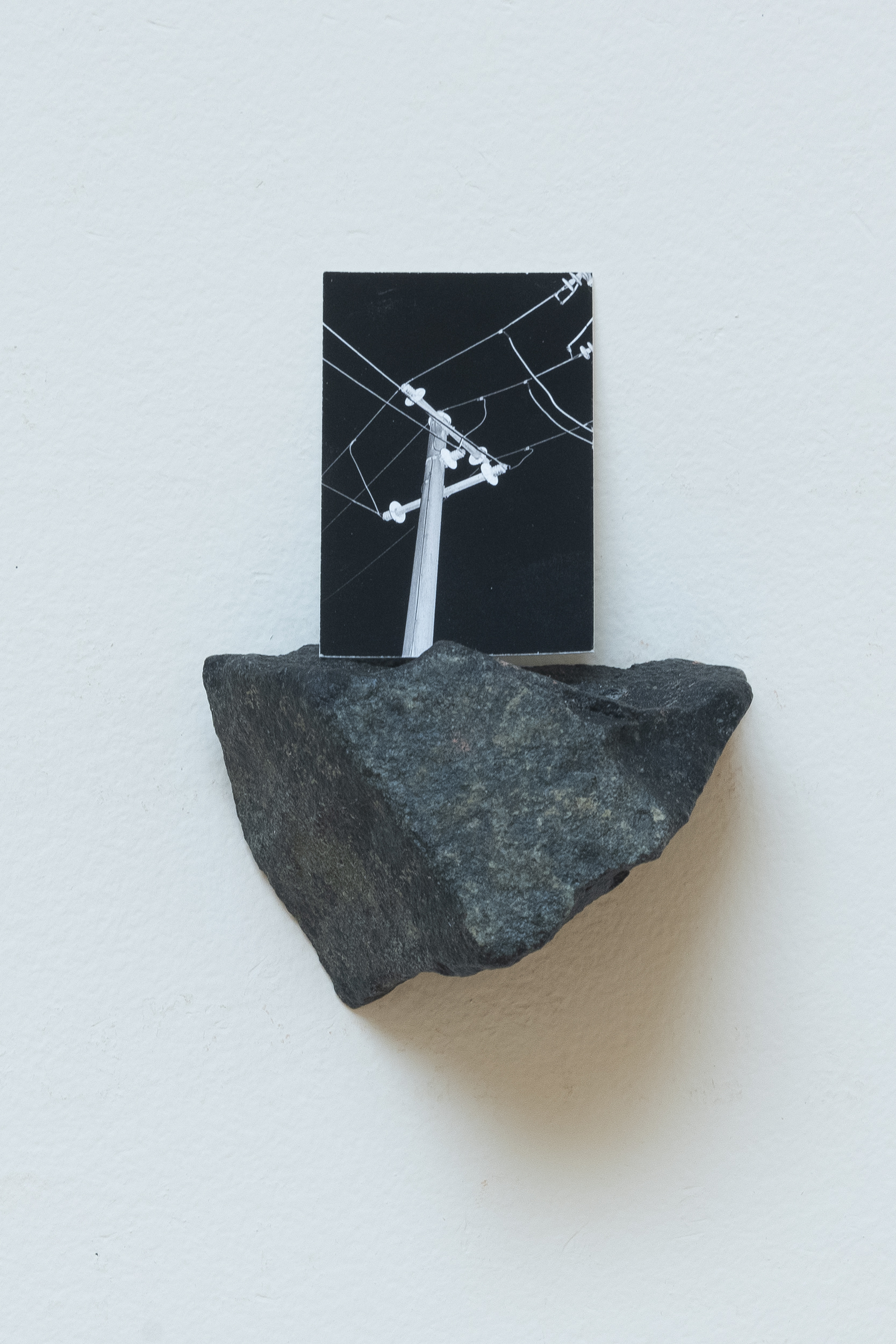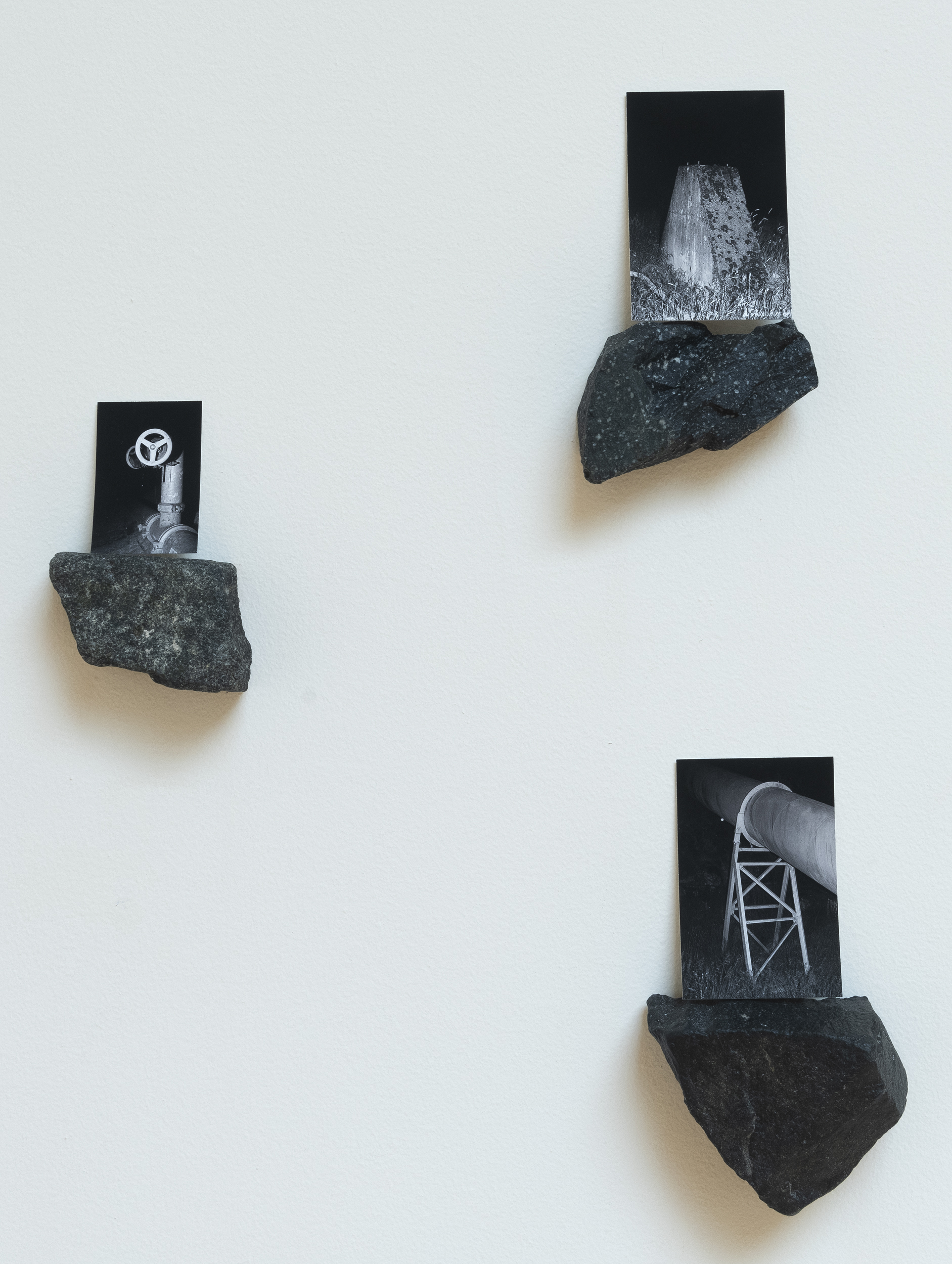McArdle on Wilson
James McArdle, local photographer, writer and CAM guide writes on a remarkable exhibition, Electrical Ecologies, by local artist Felix Wilson. Electrical Ecologies is now showing in the Sinclair Gallery, until Sunday 6 December.

As I walked into the Sinclair Gallery, the walls were studded with nuggets; not those of our district - the golden - but jet black, a very different mineral, from far in the Australian Alps.
Aware that electricity and water are a lethal mix, we accept hydropower as the exception. Yet, with Electrical Ecologies, Felix Wilson prompts a rethink. Imagine him preparing at home for his 2019 residency at the Kiewa Hydroelectric Scheme, charging his camera battery and flash unit from the mains and knowing that his destination was also that of the current he was tapping into, the second-largest hydro-electric generator in mainland Australia after the Snowy Mountains Scheme. During my childhood it was a source of national pride; I remember making a school project, a 3D map in cardboard, drinking-straws and papier-maché of the pipelines, power stations and mountainous terrain across which much later, in my teenage years, I hiked.
Constructed between 1938 and 1961 by the State Electricity Commission and privatised in the 1990s, the Kiewa Hydroelectric Scheme is wholly owned by AGL Energy against which Environment Victoria recently launched legal action. The country’s largest carbon emitter, AGL Energy also owns Loy Yang, a brown coal-fired thermal power station located 170km from Melbourne and casting a pall over Traralgon. AGL stands accused of air pollution and of adding to the climate crisis in the first case to test Victoria’s climate change laws.
Wilson's book Nocturnal Ecologies, released in 2019, discovers the connection — electrical and ecological — between the artificially-lit urban habitat of Melbourne and the generation of the power that illuminates the nocturnal world of the birds, possums, bats and insects in suburban streets and gardens.
Wilson is concerned with visualising interrelations across ecologies and geological time with the present global environmental crisis. Rather than make a bold political protest, he invites, through a figurative drawing together of imagery industrial and organic, a personal realisation by his audience: brown coal, formed from vegetation that grew more than 25 million years ago, is what actually lights our city. Wilson sets fossils of creatures found during the mining process against those now living under the stress of invasive artificial illumination that extends daylight through the 'night'.

Electrical Ecologies developed during Wilson's residency at Bogong Centre for Sound Culture, in the mountain village constructed for the hydro workers. He brought back pictures but also samples of the rubble of tunnelling works at West Kiewa Power station. These coal-black stones now serve as shelf brackets for his small digital prints under the skylit Sinclair Gallery.
The power of this combination is that it sets the fragile, momentary products of his photography — prints that warp and curve as they rest against the wall — on geological fragments from the deep past that will outlive this purpose, and us, by eons. Each image is flash-lit, accenting this temporal disparity. The effect is to render the night environment in which Wilson worked an inky black; and ink it is, since these are digitally printed. This is a blackness that is a matte, light-absorbent accumulation of pigment. It is a surface effect that cannot be rendered in the embedded and darkened silver of a chemical bromide print emulsion; it does not look photographic to an eye trained in the older technology. Like the curling prints however, this super-saturated black, so close in density to the adamantine stone, proves instrumentally and eloquently appropriate to the photographer's intention.
In addition, harsh on-camera flash projects the industrial objects from this blank abyss so that they seem to stand proud on their stone supports. Alternatively, the caverns drilled through mountains to channel water are rendered fathomless as their furthest depths are unreached by the brief zap of the strobe.

Turned on, the driving force of power production that courses through, under and over the mountain steeps, the brief blitz of fulminating flash turns the water to stone. The effect is concreted by this means of display on metamorphic rubble with its inclusions of quartz. Furthermore, the relativity of electrically-generated light to dark rock mined from sunless depths makes one's apprehension of human time, within universal, profound.
An impression of what would be, but for the intrusion of this feat of geological engineering - a rare wilderness - is reinforced in Wilson's work.
As a volunteer gallery guide I look forward to the conversations with visitors that Wilson's interconnected image-complex invites.
James McArdle
November 2021